What is a Rubber Pacifier?
A silicone rubber pacifier resembles the shape of a nipple. Most pacifiers use silicone or natural rubber as the base material. They have a lot of benefits for babies, which help soothe them or even keep them distracted.
Moreover, pacifiers come in different shapes, styles, and types.
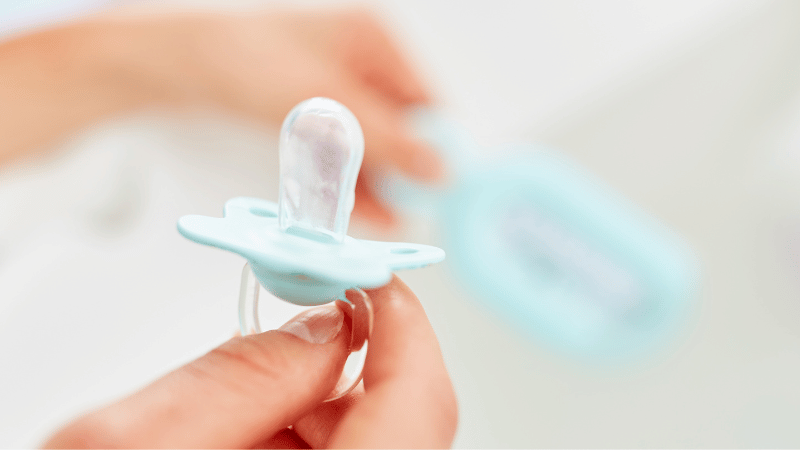
You must know the ins and outs if you are in the market for this product. For instance, the different shapes, materials, and pros and cons. Once you know everything, you will realize the potential of this product.
Different Shapes of Rubber Pacifiers
Pacifiers have nipples that come in a variety of shapes. Each shape serves a different purpose. These include:
Cylindrical Shape
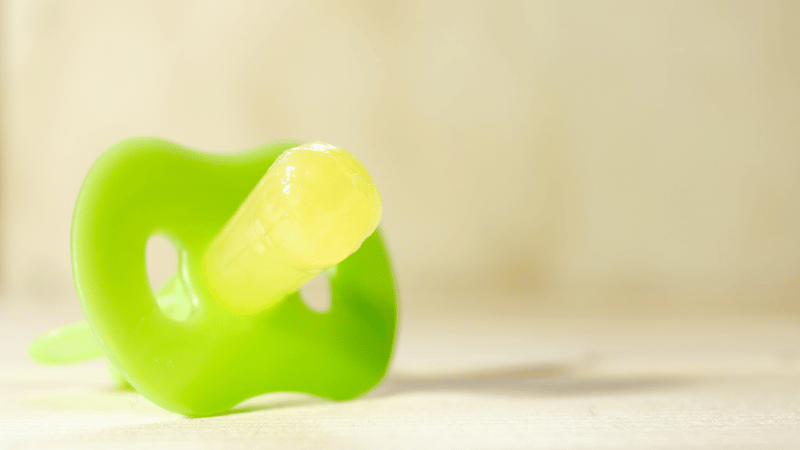
This pacifier shape has a slightly wide bottom. As a result, this becomes the perfect place for the baby’s lips to rest. Hence, often babies that breastfeed prefer cylindrical-shaped pacifiers.
Cherry Shape
Cherry-shaped pacifiers also offer a similar experience to breastfeeding. This is because it allows the baby’s tongue to cup around the nipple.
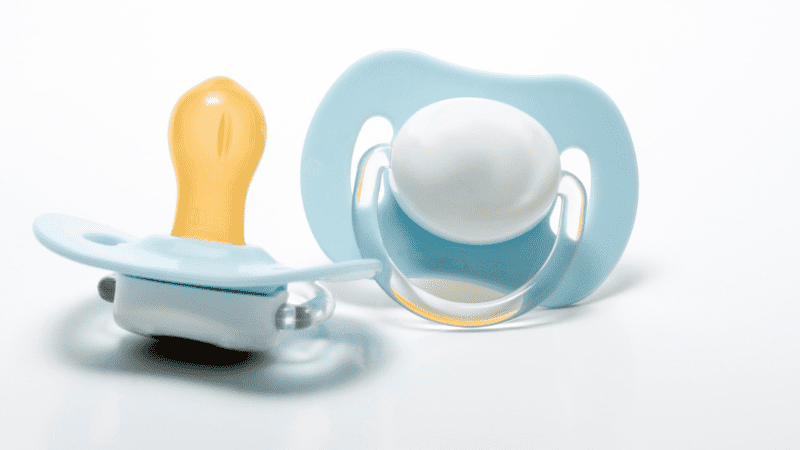
However, unlike the cylindrical pacifier, this does not have a wide bottom for the lips to rest on.
Butterfly Shape
The butterfly-shaped pacifier has the most expansive bottom. As a result, it comes down to your baby’s preference whether they want such a broad base.
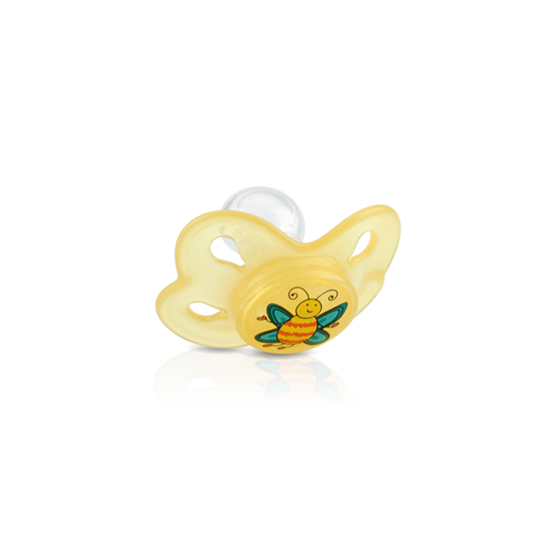
Orthodontic Shape
This orthodontic pacifier has a beveled side similar to how a lipstick tube looks. Moreover, orthodontic pacifiers have unique features and are often made using medical-grade silicone nipples.
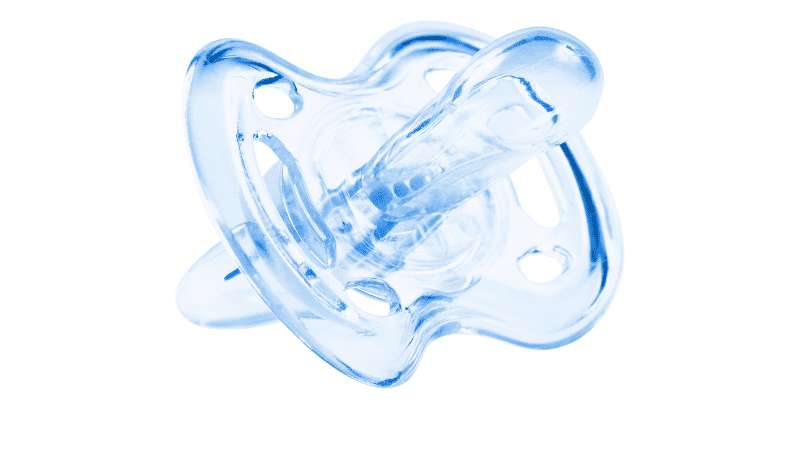
What Should You Choose for Your Need?
Ideally, if your baby breastfeeds, you must start by offering them a cylindrical-shaped pacifier. In the case of the baby objects, chances are the cherry-shaped pacifier will please them.
However, if both don’t works, you can try the remaining two shapes. After all, it all comes down to comfort and what the babies prefer.
Benefits of Pacifiers
Pacifiers have tons of benefits for babies. However, we won’t just look at the help in this section.
Instead, we will also shed some light on the cons of pacifiers so that you know how to utilize them properly or better instruct your customers regarding usage.
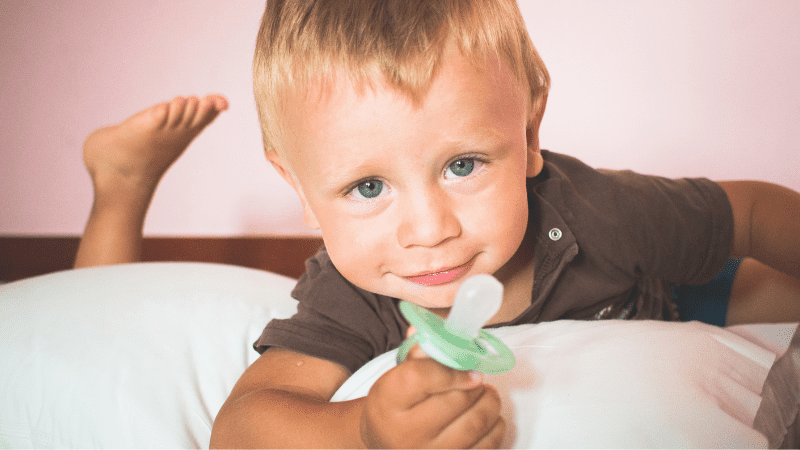
Pros
- Rubber pacifiers help soothe crying babies. Moreover, it also helps them fall asleep.
- Also, pacifiers may reduce the risk of sudden infant death syndrome (SIDS) by promoting better breathing and airflow.
- Pacifiers can help calm a baby during medical procedures or while traveling on an airplane.
- Rubber pacifiers can provide security and comfort to babies and young children.
- Pacifiers may help babies self-soothe and calm themselves down when upset or restless.
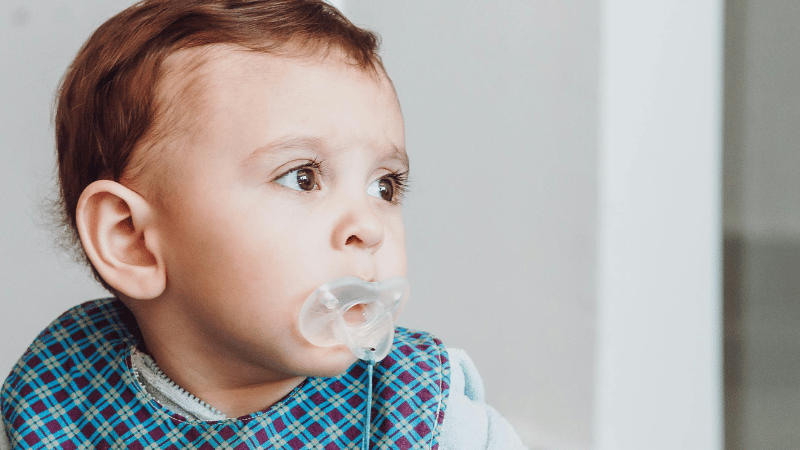
Cons
- Pacifiers may interfere with breastfeeding if they are used excessively or if they are introduced too early. Therefore, submit them at the right age.
- It can also be a choking hazard if they are not used properly.
- Rubber pacifiers can cause a baby to swallow too much air, leading to gas and discomfort.
- Some children may become dependent on pacifiers and have trouble giving them up later.
Are Rubber Pacifiers Safe?
Yes, pacifier rubber is safe. However, you have to make sure you check the rubber material and the grade. For instance, 100% natural rubber is undoubtedly safe for babies.
However, other rubber materials, such as silicone, are also used to make pacifiers. In that case, you must ensure that the silicone used by the manufacturer is either food-grade or medical-grade.
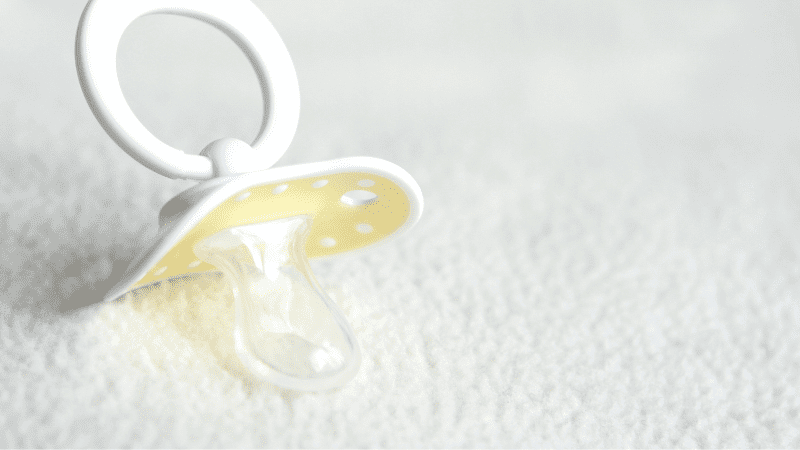
All in all, manufacturers only use safe rubber materials for pacifiers. However, if you want to be extra cautious, make sure you have some knowledge about rubber materials.
Pacifier Safety Tips
Keeping the following safety tips and considerations in mind when using a pacifier for babies is vital. We always recommend businesses promote these guidelines to their customers as well:
- Choose the Correct Size: Select a pacifier that is age-appropriate for your baby. A pacifier that is too small is a choking hazard, while one that is too large can cause mouth injuries.
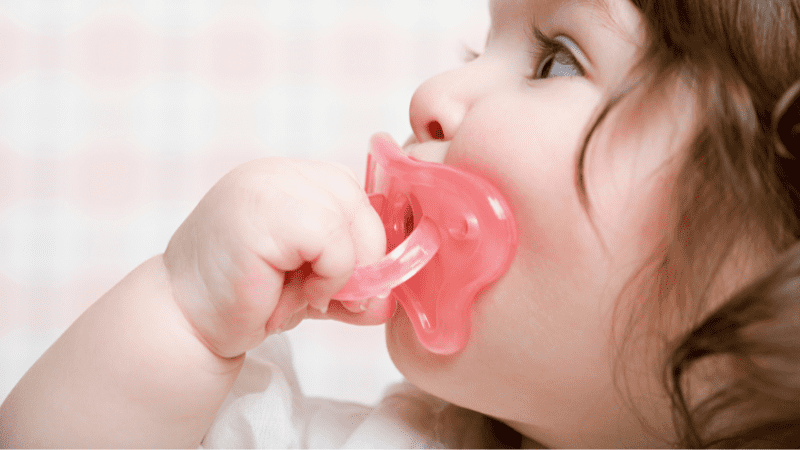
- Follow Your Baby’s Lead: Do not force your baby to use a pacifier. If they are not interested, respect their preference and find other ways to soothe them.
- Always Supervise Use: Keep a watchful eye on your baby whenever they are using a pacifier to ensure they are safe and to respond quickly if any issues arise.
- Plan for Weaning: Consider weaning your child off the pacifier after the age of 2 or 3 to help prevent potential dental problems, such as misaligned teeth.
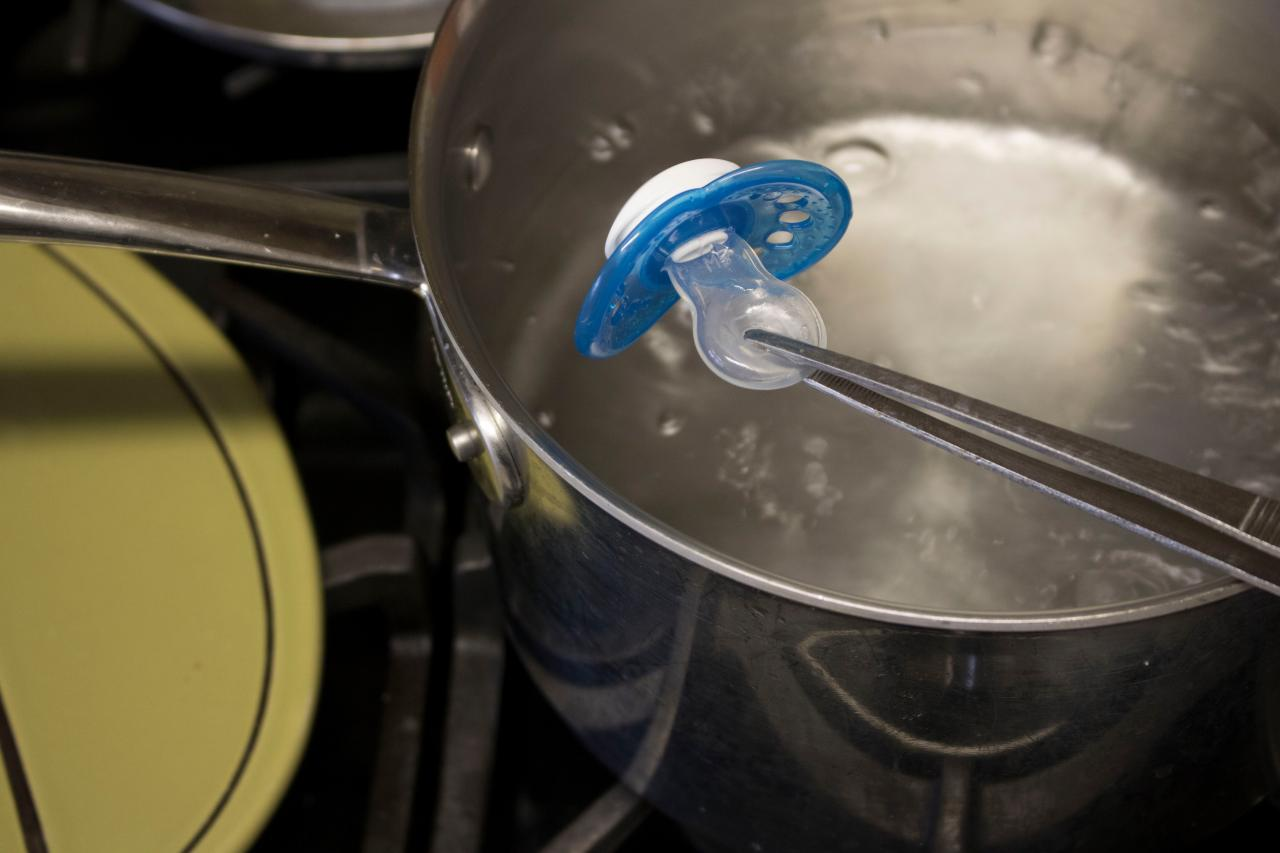
Which Rubber Material Should You Choose?
Pacifiers typically come in two materials: natural rubber and synthetic silicone. We will look at each material separately:
Silicone
Only food-grade silicone or medical-grade silicone is used to produce pacifiers. Moreover, good-quality silicone contains no toxicants, making it safe for babies.
However, it would be best if you choose a reliable manufacturer who uses high-quality silicone. Why? Because low-quality silicone contains traces of toxic metals such as lead.
Silicone pacifiers also last longer than natural rubber pacifiers. As a result, you can sell them based on longevity. However, one thing to remember is that the longer it is used, the more it degrades.
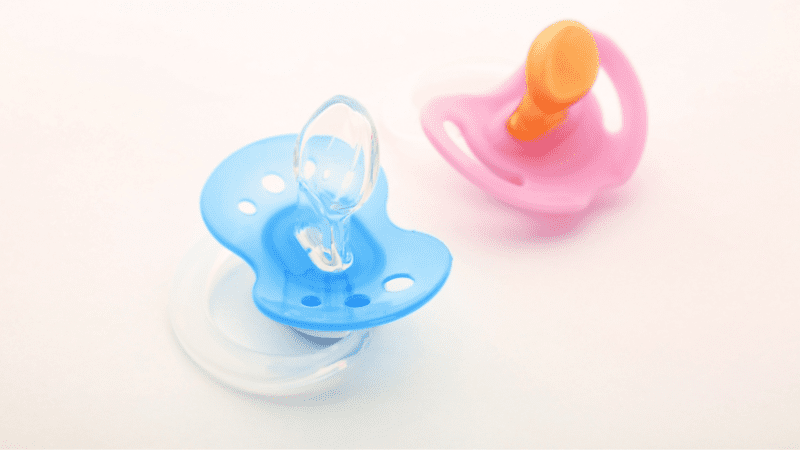
Hence, we always recommend replacing a silicone pacifier as soon as you start seeing cracks. This can lead to choking hazards if not done at the right time.
Also, try to keep silicone pacifiers away from the dishwasher, as frequent sterilization reduces their life.
Additionally, a good manufacturer always recommends replacing a silicone pacifier within 4–6 weeks, depending upon use.
Also, a drawback of silicone is that it is not eco-friendly. Unlike natural rubber, silicone doesn’t biodegrade, which proves harmful to the environment.
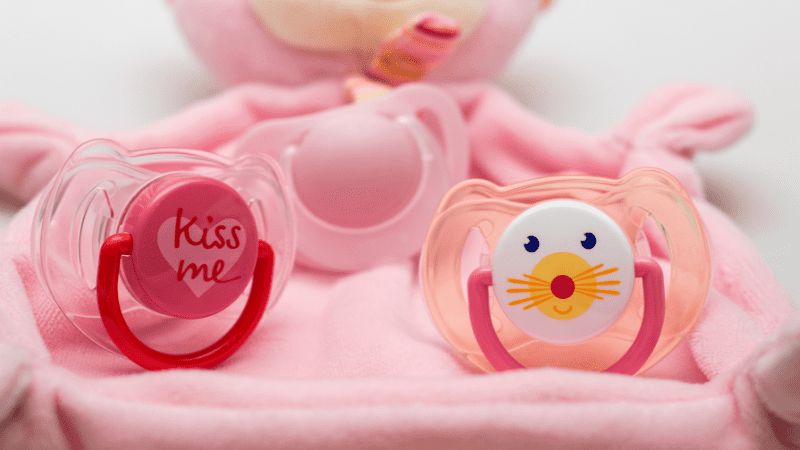
Natural Rubber
Natural rubber is undoubtedly the better material choice of the two. But how? Well, for starters, natural rubber does not contain any toxicants. Moreover, natural rubber tends not to harm the environment as much as silicone.
As for the source, natural rubber comes from the Hevea Brasiliensis tree latex. Moreover, all-natural rubber pacifiers do not contain any chemical additives.
As a result, this further makes them safer for babies and makes for a good selling point.
You can also distinguish between natural rubber and silicone pacifiers based on color. This is because natural rubber pacifiers have a dull yellow shade to them.
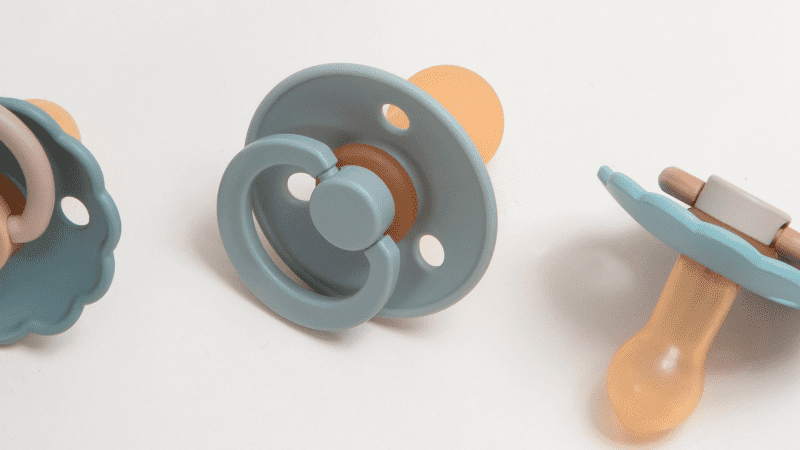
The average life for a natural rubber pacifier ranges between 6–8 weeks. Over time, these tend to become sticky and soft. Thus, it is time for a replacement if you see these signs.
You also must ensure the baby does not have a latex allergy when using natural rubber.
Silicone vs. Natural Rubber: Comparison
| Factor | Silicone Pacifiers | Natural Rubber Pacifiers |
| Durability | More resistant to UV light, heat, and saliva | Softer, but less resistant to external conditions |
| Replacement | Recommended every 4–6 weeks; may crack over time | Average lifespan 6–8 weeks; becomes sticky/soft; also replaced within 4–6 weeks |
| Material | Industrially synthesized, food-grade silicone is safe | Harvested from Hevea Brasiliensis tree latex; no chemical additives |
| Texture | Firmer feel | Softer texture, closer to mother’s breast |
| Allergies | Hypoallergenic; avoids latex allergy | May cause latex allergies in sensitive babies |
| Taste & Odor | Odorless and tasteless | Has a natural rubber taste and odor |
| Maintenance | Withstands boiling and microwave sterilization | Cannot be microwaved; best cleaned by boiling water |
| Eco-friendliness | Not biodegradable; less environmentally friendly | Biodegradable; more eco-friendly |
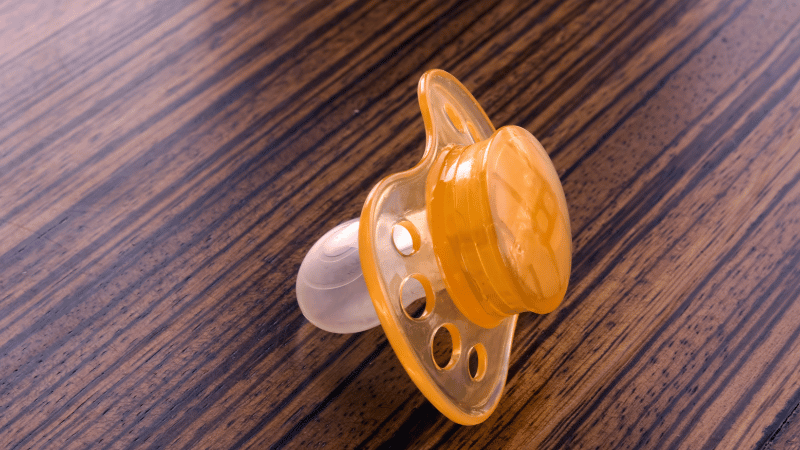
Almost every business in this niche comes across the question: which is better? The answer isn’t simple, so here is a thorough comparison based on several factors:
- Durability: Silicone performs better under normal conditions (UV light, heat, saliva), while natural rubber is softer.
- Replacement: Natural rubber can last slightly longer (6–8 weeks), but all pacifiers should be replaced within 4–6 weeks depending on condition.
- Material: Natural rubber comes from tree latex; silicone is industrially synthesized but safe when food-grade.
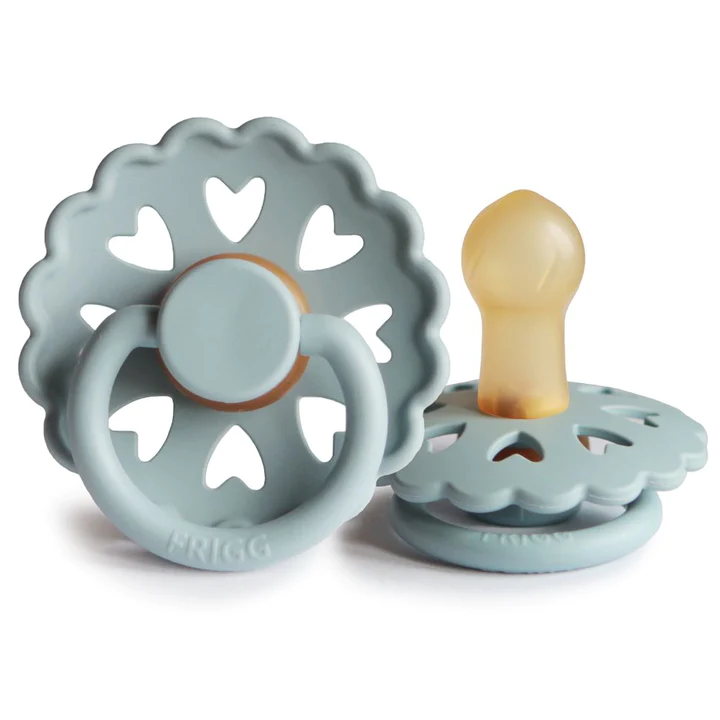
- Allergies: Natural rubber may trigger latex allergies; silicone avoids this risk.
- Texture: Natural rubber is softer and closer to a mother’s breast; silicone is firmer.
- Taste: Natural rubber has a rubber-like taste and odor; silicone is odorless and tasteless.
- Maintenance: Natural rubber cannot handle microwaving; silicone tolerates high temperatures and is easier to sterilize.
- Eco-friendliness: Natural rubber is biodegradable; silicone is not.
Conclusion
Rubber pacifiers offer a natural, flexible choice for infant comfort, available in various shapes to suit your baby’s needs. Made from safe, non-toxic materials like natural rubber or silicone, they support soothing and oral development.
Always select BPA-free options, ensure proper sizing, and follow hygiene practices for your baby’s safety.
Want A Reliable Supply of Safe Pacifiers? Hongju Can Help You!
At Hongju, we source the best-in-class raw materials for pacifiers. As a result, our products are entirely safe for use. You can also customize the orders per your audience’s needs and demands.
Moreover, we also offer product prototyping. Get in touch today!